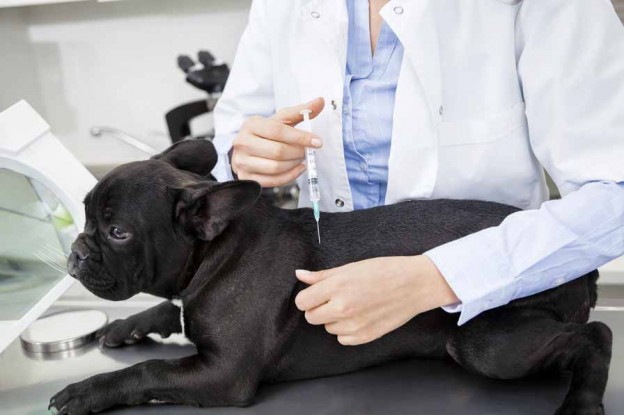
Mel Hearse talks to Dr Kate Adams, veterinarian and part owner of Bondi Veterinary Hospital, about all things heartworm and how to prevent it
Most dog owners have heard of heartworm. It’s one of the many routine treatments your vet will recommend and if you’ve had your pooch for more than a year and opted for annual treatment through your vet (the recommended way to go), no doubt you’ve been sent a reminder or two for the next round.
Prevention is better than cure
When it comes to heartworm, Dr Kate Adams of Bondi Veterinary Hospital says heartworm disease is easily prevented, with a choice of three classes of preventive medication to choose from. Daily medications are cheap, but not recommended as they need to be used every day — missing even one dose opens your pet up to the risk of contracting heartworm. Monthly medications come in many forms — oral tablets or chewables and topical spot-ons — that, as the name suggests, need to be taken every month and failing to treat your dog regularly again puts them at risk of infection. Last but not least is the annual injection — Dr Kate says an injection called ProHeart SR-12 is available that provides protection from heartworm infection for 12 months and requires no other medications to be given at home.
How are dogs infected?
In short, dogs become infected with heartworm via mosquito bites from infected mosquitoes — and for anyone who’s been a human pin cushion for these pesky insects, it highlights why preventative action is so important, as there is no shortage of mozzies in Australia! In fact, there are up to 30 species of mosquitoes known to transmit heartworm.
When a female mosquito sucks blood from an infected dog, it also draws up many microfilaria, which then continue to develop inside the mosquito. After 10 to 30 days, these microfilariae make their way into the mosquito’s mouth. Mr Mosquito then goes on his merry way, spreading heartworm.
From the dog’s end of the equation, once bitten by an infected mosquito, the microfilariae make their homes in your dog’s soft tissue for a period, then migrate into their bloodstream and into the heart. From here, it will take a further two to three months before the young heartworm develops enough to reproduce (this cycle takes six to seven months to be completed) and then breed up to 300 adult worms. They can survive in your dog’s body for up to five years, and a female heartworm can spawn millions of babies.
Dr Kate says the number of heartworm infections increases in warmer climates, and roughly estimates an unprotected dog has a one-in-10 chance of being infected with heartworm in Australia. There are no specific characteristics that increase their risk, so age, breed, weight or diet don’t make a difference.
“Infection can occur at any age but because it takes a number of years for symptoms to develop, heartworm is more often diagnosed in dogs three to eight years of age,” she says.
Signs and symptoms
The signs of heartworm infection will vary based on a number of factors — how many adult worms are present, where the worms are located, how long they’ve been present and the degree of damage caused to the heart, lungs, liver and kidneys from the worms. Because heartworms cause disease by clogging the heart and major blood vessels leading from the heart, it means the supply of blood to the other organs in your dog’s body is compromised, especially the lungs, liver and kidneys. This can lead to these organs malfunctioning.
As a dog owner, Dr Kate recommends looking out for the following signs:
- Coughing — usually a soft, dry,
- chronic cough
- Exercise intolerance
- Lethargy
- Fainting
- Weight loss
- Laboured breathing
- Ascites — this means swelling of the abdomen, which is caused by the accumulation of fluid when the right side of the heart is not functioning normally
- Coughing up blood
If any of these signs are present, your vet will assess your dog’s symptoms and give it a physical examination. They will also take blood for testing and may undertake X-rays and an ultrasound.
Treatment and cures
Whether or not your pet can be treated successfully will depend on how much damage has already been done to the heart, lungs, liver and kidneys. If the organ damage is significant, it’s safer to focus on treating the organ damage, as opposed to risking treatment to kill the adult heartworms.
If the dog is healthy enough, your vet will treat it with adulticide therapy, which kills the adult heartworms in the heart. Your vet will discuss the full course of treatment and home care if necessary. “Three months after treatment, a blood sample is taken to test for the presence of adult heartworm,” Dr Kate says. That is how the vet determines if treatment has been successful or not.
This article was originally published in DOGSLife #142. Click here to subscribe to our pawsome magazine.




